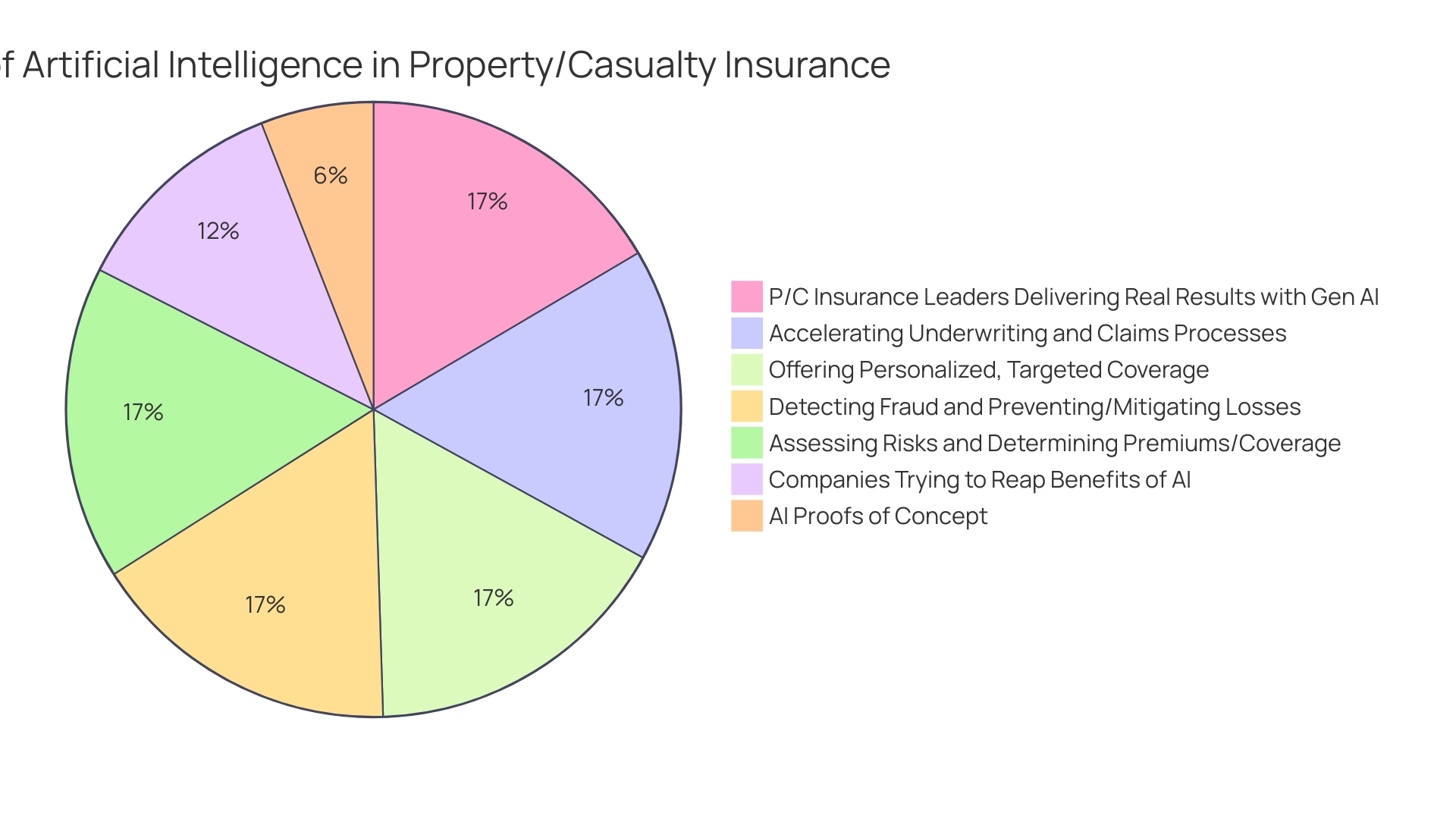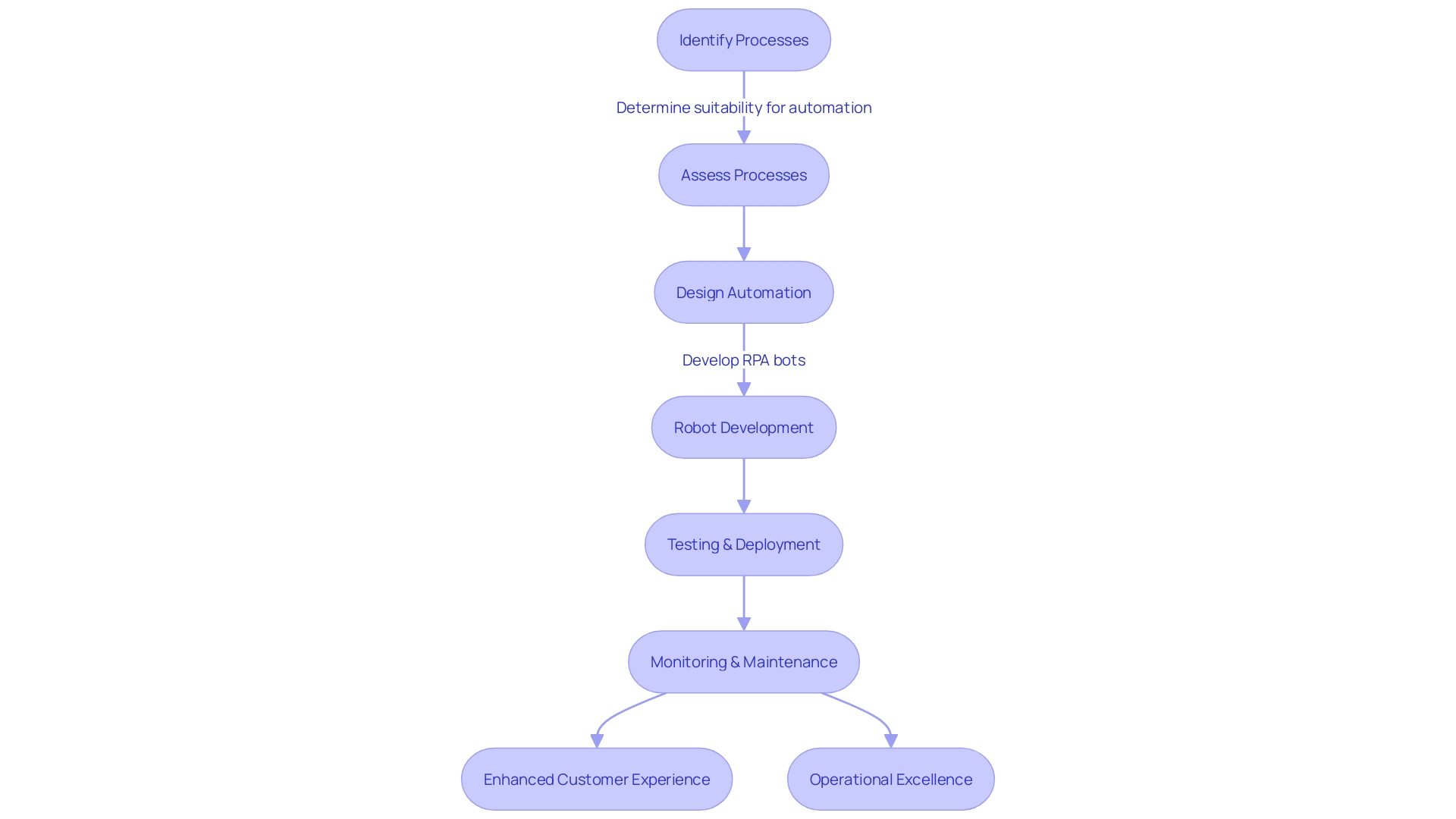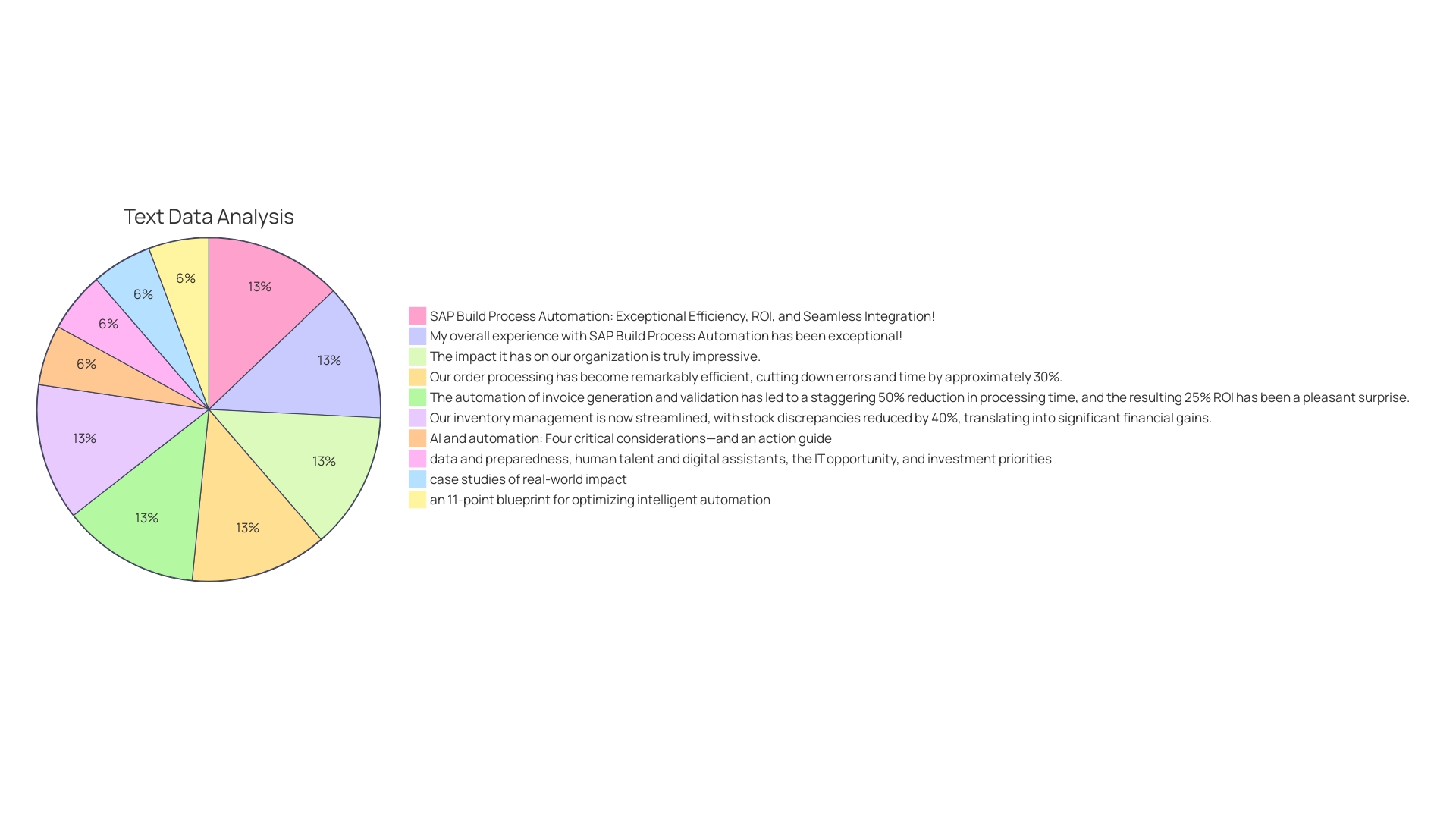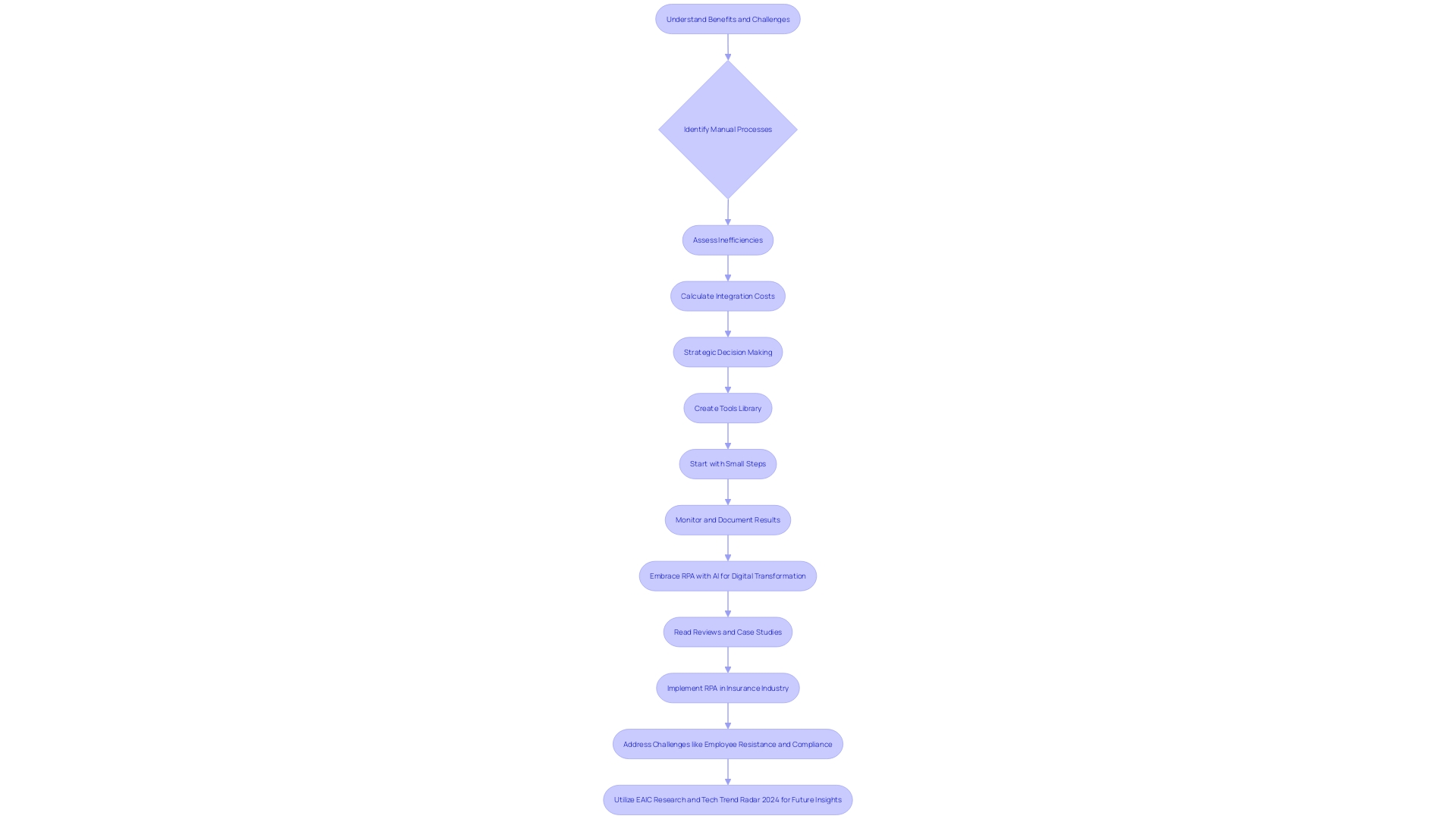Introduction
Robotic Process Automation (RPA) is revolutionizing the insurance industry, bringing enhanced operational efficiency and improved customer satisfaction. By automating rule-based tasks such as data entry and transaction processing, insurers can save time and minimize the risk of human error. The financial benefits are significant, with studies showing a 73% net present value (NPV) benefit and a 5.4% compound annual growth rate (CAGR) over three years.
Furthermore, RPA is evolving with advanced technologies like AI and generative AI, expanding its capabilities to process semi-structured and unstructured data. Real-world examples demonstrate the transformative impact of RPA, showcasing efficiency gains and remarkable productivity improvements. As RPA gains traction, it becomes clear that it is not just a tool for operational efficiency but also a catalyst for growth and maintaining strong customer relationships.
Benefits of Robotic Process Automation
Robotic Process Automation (RPA) is revolutionizing the insurance industry by automating routine tasks, leading to enhanced operational efficiency and improved customer satisfaction. By deploying software robots, or 'bots', insurers can automate a multitude of rule-based tasks such as data entry, transaction processing, and workflow execution. For instance, with RPA, the time-consuming process of claims handling becomes faster and more accurate, as bots work with precision and consistency, minimizing the risk of human error and ensuring that customer inquiries are addressed promptly.
The transformative impact of RPA is not limited to time savings; it also contributes to cost reduction. A study by Forrester Research on intelligent automation's total economic impact revealed a staggering 73% of overall net present value (NPV) benefit and a 5.4% compound annual growth rate (CAGR) over three years for a composite customer. These statistics underscore the financial advantages that RPA can deliver to insurance companies.
Moreover, the incorporation of advanced technologies like AI and generative AI into RPA solutions is broadening the scope of automation, enabling the processing of semi-structured or unstructured data and enhancing decision-making processes. This leap in automation technology is not only about executing simple tasks but also about intelligently assessing information to drive or complete processes, as outlined in the 2023 Technology Trends eBook.
Real-world examples further illustrate the benefits of RPA. For example, Louvre Hotels Group experienced significant efficiency gains by automating rate code maintenance with RobosizeME's automation technology, saving hundreds of hours per month. Similarly, SS&C Blue Prism's document automation, particularly with OCR technology, has been heralded as a 'game-changer', allowing a large US retail customer to automate the processing of customer orders received digitally with remarkable efficiency.
As RPA continues to gain traction, it is clear that the technology is not only a tool for improving operational efficiency but also a catalyst for growth, enabling insurance companies to scale operations and maintain strong customer relationships with consistent, accurate, and timely service.

Key Components of Robotic Process Automation
Robotic Process Automation (RPA) is revolutionizing the insurance industry by automating routine, rule-based tasks, leading to greater efficiency and accuracy. Here's an expert guide to successfully implementing RPA:
-
Process Identification and Prioritization: Start by pinpointing processes ripe for automation. Look for tasks with high potential impact and straightforward complexity. A study by Forrester Research using the Total Economic Impact methodology suggests prioritizing processes that contribute significantly to revenue growth, as their findings show a 73% NPV benefit from intelligent automation.
-
Automation Design: Once processes are selected, the next step is to meticulously design the automation. This includes specifying each step, data inputs and outputs, and how the automation will integrate with current systems. Datafinity's approach to building a proof of concept first can be insightful here, as it allows you to demonstrate the value of automation on a small scale before a full rollout.
-
Robot Development: Develop the software bots that will carry out the tasks. These bots need to be configured to work seamlessly with various systems and applications. RobosizeME's collaboration with Louvre Hotels Group showcases the substantial time savings gained from well-developed bots—hundreds of hours per month.
-
Testing and Deployment: Rigorous testing is crucial to confirm the automation's reliability and precision. Post-testing, deploy the solution in a controlled setting before scaling up. Remember that consistent data accuracy, as emphasized in automated document processing, is vital.
-
Monitoring and Maintenance: Continuous monitoring is crucial to address any issues promptly. Regular maintenance ensures that automation operates effectively, as ongoing results monitoring and documentation can inform future projects and strategies.
By following these structured steps and learning from successful case studies, insurance companies can harness the full potential of RPA, leading to enhanced customer experiences and operational excellence.

Best Practices for Implementing Robotic Process Automation
Robotic Process Automation (RPA) is a powerful tool that, when implemented with foresight and strategy, can revolutionize the insurance industry. For those looking to harness RPA's potential, it's essential to begin with a targeted approach. Start with automating a select few processes, which allows for the assessment and demonstration of RPA's efficacy.
This approach was exemplified by Hiscox, which successfully automated 28% of its repetitive workload, resulting in faster response times and heightened customer and employee satisfaction.
To ensure a smooth RPA integration, involving stakeholders is crucial. Their insights and buy-in can greatly influence the success of the implementation. Hiscox's experience also highlights the importance of revising client service models to improve throughput and alleviate the pressure on service agents.
Training cannot be overlooked; employees need to understand how to work with the new automated processes to maximize their potential. Furthermore, data security and compliance are paramount, as the integration of RPA requires robust measures such as encryption and access controls to protect sensitive information.
Lastly, an ongoing evaluation is vital for continual optimization. By regularly assessing automated processes and adapting to feedback and business evolution, companies can maintain efficiency. As Guilherme Batista from Hiscox suggests, the ultimate goal is sustainable growth without proportionally increasing operating expenses.
In the broader context, RPA's influence extends beyond individual companies. The insurance market at large is experiencing a transformation with AI and machine learning playing pivotal roles in risk management processes. Recognizing this shift, insurers are investing in AI technologies to meet customer needs and stay ahead in a highly competitive market.
The adoption of RPA, with its promise of improved efficiency and reduced costs, is not just a trend but a strategic move towards a more agile and responsive insurance industry.

Case Studies: Successful RPA Implementations in the Insurance Industry
Robotic Process Automation (RPA) is revolutionizing the insurance industry by enhancing operational efficiency and customer satisfaction. For instance, Hiscox, a specialist insurance firm, faced challenges due to their rapid growth, which led to an increased volume of client emails, putting pressure on service teams. By implementing RPA, they successfully reduced their repetitive workload by 28% and decreased average response times.
This not only improved customer satisfaction but also boosted employee morale.
In another case, a globally recognized insurer was able to streamline its client service model significantly. By employing RPA to manage routine tasks, the company achieved higher throughput without compromising the personalized service essential in the insurance sector. Guilherme Batista, Process and Operations Manager at Hiscox, emphasized the importance of sustainable growth without proportionately increasing operating expenses.
This approach underscores the strategic role of RPA in achieving business scalability while maintaining cost efficiency.
Moreover, the insurance industry must stay abreast of the evolving legal landscape, such as the forthcoming EU Artificial Intelligence Act, which could have implications for the use of certain AI applications. As the sector continues to innovate, it's essential to maintain a keen awareness of the latest technology trends and regulatory developments to leverage RPA responsibly and effectively.
These examples illustrate the transformative potential of RPA to not just automate processes, but also to foster a competitive advantage by delivering swift, personalized services that meet the escalating expectations of today's customers.
Common Challenges and Solutions
Embracing Robotic Process Automation (RPA) in the insurance industry is a strategic move that can lead to significant operational improvements. However, it's not without its challenges, which organizations need to navigate carefully. For instance, employees may initially resist automation due to concerns about job security.
Effective leadership can mitigate this by openly communicating the advantages of RPA, such as the elimination of tedious tasks, and by offering training to upskill staff into more fulfilling roles.
Integration complexities are another hurdle. Seamless integration of RPA with existing systems is essential for smooth data flow and operation continuity. This requires close collaboration with IT departments and leveraging expert knowledge to ensure compatibility and functionality.
The complexity of certain insurance processes, especially those involving nuanced decision-making or unstructured data, may also pose difficulties. Leaders must critically assess the applicability of RPA in these areas and consider complementary solutions when necessary.
Furthermore, governance and compliance are non-negotiable in the highly regulated insurance sector. Automations must adhere to industry standards, and regular monitoring is imperative to ensure ongoing compliance.
Informed decision-making is at the heart of overcoming these challenges. By examining which manual processes are ripe for automation and calculating the integration costs, companies can strategically modernize their operations. This is exemplified by the insurance adjustment process, where the use of images for damage assessment and claim validation has showcased the benefits of adopting new technologies.
Moreover, leveraging gen AI can significantly enhance claims processing and customer experience. As AI capabilities evolve and insurance companies become more comfortable with machine-generated decisions, the industry will witness a transformation in efficiency and service quality.
Finally, the forthcoming EAIC research findings and the Tech Trend Radar 2024 are set to offer valuable insights into AI integration within the industry, providing a compass for navigating the path towards a more automated and efficient future. By proactively addressing these challenges and harnessing the right technologies, the insurance industry can unlock the full potential of RPA and maintain a competitive edge.

Future Trends in Robotic Process Automation
Robotic Process Automation (RPA) is becoming increasingly sophisticated in the insurance industry, promising to streamline operations and enhance productivity. Here are some of the key trends:
-
Intelligent Automation: The fusion of Artificial Intelligence (AI) and Machine Learning (ML) with RPA is forging a path for more intelligent automation. As noted by industry experts, this combination is revolutionizing decision-making and data analysis processes, especially in complex fields like optometry where traditional equipment may lack connectivity. The ability to process unstructured data is particularly transformative, enhancing the precision and speed of insurance tasks.
-
Process Mining: Before automating, insurers are turning to process mining to dissect and optimize existing workflows. This proactive approach is crucial in pinpointing inefficiencies and setting the stage for more effective RPA implementations, ensuring a seamless modernization of insurance processes.
-
Hyperautomation: An all-encompassing automation strategy, hyperautomation, integrates RPA with other technologies such as workflow automation, natural language processing, and AI. This holistic method is essential for achieving end-to-end process optimization, catapulting efficiency and productivity to new heights.
Incorporating these advancements, insurance companies like Specsavers are enhancing customer experiences by identifying potential health issues early on, using insights from data to streamline operations despite a complex global supply chain. Similarly, the integration of generative AI is being explored by industry leaders for its profound impact on productivity and operational agility, with reports of employees experiencing significant reductions in time spent on routine tasks.
Moreover, process mining plays a critical role in refining the underwriting process, allowing underwriters to swiftly access guidelines and regulations, and summarize complex documents. The insurance industry is also witnessing Ai's positive influence in healthcare, shortening patient wait times and automating tasks like data retrieval.
To fully leverage these technologies, insurers must carefully evaluate which processes are ripe for automation, consider the human aspect of implementation, and stay abreast of legislative developments, such as the proposed AI Act in the European Union. The trajectory of RPA in the insurance industry is clear: it is a sustainable, long-term trend poised to address some of the sector's most pressing challenges. As the cost of robotics continues to decrease and their functionality improves, the opportunity for insurers to innovate and deliver cost-effective solutions is expanding.
Conclusion
In conclusion, Robotic Process Automation (RPA) is revolutionizing the insurance industry by automating routine tasks, enhancing operational efficiency, and improving customer satisfaction. RPA offers significant financial benefits, with studies showing a 73% net present value (NPV) benefit and a 5.4% compound annual growth rate (CAGR) over three years.
Real-world examples demonstrate the transformative impact of RPA, showcasing efficiency gains and remarkable productivity improvements. RPA is not just a tool for operational efficiency but also a catalyst for growth and maintaining strong customer relationships.
To successfully implement RPA, insurance companies should follow a structured approach. This includes identifying and prioritizing processes for automation, designing the automation meticulously, developing software bots, testing and deploying the solution, and continuously monitoring and maintaining the automation.
While challenges such as employee resistance and integration complexities exist, effective leadership, communication, and training can mitigate these issues. Data security and compliance measures are also crucial to protect sensitive information.
Looking ahead, intelligent automation, process mining, and hyperautomation are key trends in RPA that are revolutionizing decision-making processes, optimizing workflows, and achieving end-to-end process optimization.
In conclusion, RPA is a sustainable, long-term trend that addresses the insurance industry's challenges. By embracing RPA and staying informed about the latest technology trends and regulatory developments, insurers can position themselves as industry leaders, drive growth, and maintain cost efficiency.





